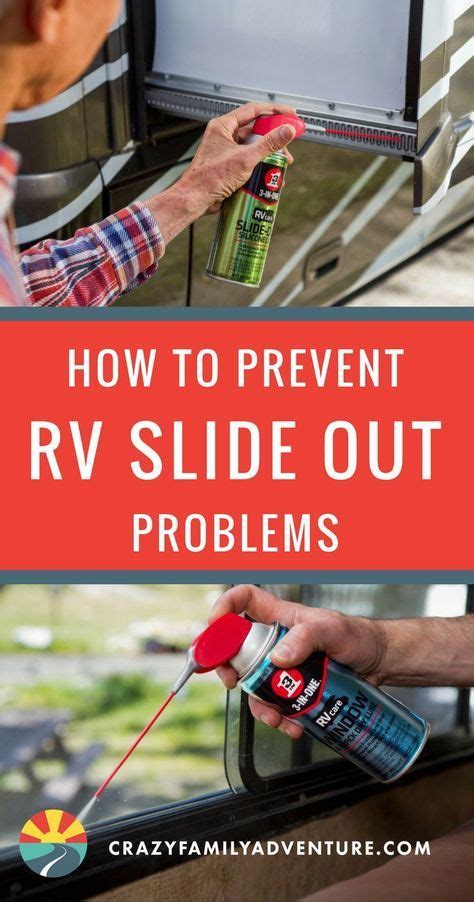Prevent RV Slide Out Damage: Vertical Alignment Tips
RV slide-outs are a fantastic feature, adding significant living space to your recreational vehicle. However, these convenient additions are susceptible to damage if not properly maintained and aligned. Improper vertical alignment is a common culprit, leading to premature wear and tear, costly repairs, and even frustrating malfunctions during your travels. This comprehensive guide provides essential tips and techniques to ensure your RV slide-outs remain smoothly functioning and damage-free for years to come.
Understanding RV Slide Out Mechanics
Before diving into preventative measures, understanding how your slide-out system works is crucial. Most RVs utilize either hydraulic or electric mechanisms to extend and retract the slide-out room. Regardless of the mechanism, the vertical alignment is paramount. If the slide-out isn't perfectly aligned vertically, it can put undue stress on the components, leading to binding, jamming, and eventual damage. This stress can manifest in various ways, including damage to the seals, the motor, the tracks, and even the structure of the RV itself. Regular inspections and preventative maintenance are vital to avoiding these problems.
How to Check for Vertical Alignment
Regularly checking the vertical alignment of your slide-outs is a simple yet highly effective preventative measure. Here's how to perform a basic inspection:
-
Visual Inspection: With the slide-out fully retracted, carefully examine the sides and the top. Look for any gaps or misalignments between the slide-out and the RV's main body. Even slight discrepancies can indicate a problem.
-
Measuring: Use a measuring tape to measure the distance between the slide-out and the RV frame at several points along its length. Inconsistencies in these measurements indicate misalignment. Pay close attention to the top and bottom edges.
-
Extension and Retraction Test: Slowly extend and retract your slide-out. Listen for any unusual noises like grinding or binding. These sounds often signal misalignment or other mechanical issues requiring attention.
What Causes Vertical Misalignment?
Several factors can contribute to vertical misalignment in RV slide-outs:
- Uneven Ground: Parking on uneven terrain is a major contributor. The RV chassis can twist, causing the slide-out to become misaligned.
- Wear and Tear: Over time, the components of the slide-out mechanism can wear down, leading to inconsistencies in movement and alignment.
- Improper Installation: In some cases, improper installation during the manufacturing process can contribute to future alignment problems.
- Impact Damage: Accidents or impacts can easily misalign a slide-out.
How to Correct Minor Vertical Misalignment
Minor misalignments can often be corrected through careful adjustments. However, always consult your RV's manual before attempting any adjustments. Improper adjustment can worsen the problem.
Some slide-out systems have adjustment screws or bolts that allow for minor vertical corrections. These are typically located on the slide-out's frame or the RV chassis. Proceed with extreme caution and make only small adjustments at a time.
When to Seek Professional Help
If you notice significant misalignment, unusual noises during operation, or are uncomfortable making adjustments yourself, it's best to contact a qualified RV technician. Attempting significant repairs without the necessary expertise can cause further damage and increase repair costs.
Preventing Future Problems: Best Practices
- Level Your RV: Always park on level ground whenever possible. Use leveling blocks or a leveling system to ensure your RV is stable.
- Regular Maintenance: Regularly inspect your slide-outs for any signs of wear or misalignment. Lubricate moving parts as recommended in your owner's manual.
- Gentle Operation: Avoid forcing the slide-out if it feels stiff or difficult to move. This can cause damage to the mechanism.
- Avoid Overloading: Don't overload your slide-out with excessive weight. This can put extra stress on the components and contribute to misalignment.
Frequently Asked Questions (FAQs)
What are the signs of slide-out damage?
Signs of slide-out damage include difficulty extending or retracting, unusual noises during operation, visible misalignment, and leaks around seals.
How often should I check my RV slide-outs?
It's recommended to check your slide-outs before and after each trip, and at least monthly during periods of non-use.
Can I lubricate my slide-out myself?
Yes, but always refer to your owner's manual for the recommended lubricant and application instructions.
How much does it cost to repair a damaged RV slide-out?
Repair costs vary greatly depending on the extent of the damage and the type of repair needed. It's best to obtain a quote from a qualified RV technician.
By following these preventative measures and addressing any issues promptly, you can ensure your RV slide-outs remain functional and damage-free, allowing you to enjoy your travels to the fullest. Remember, proactive maintenance is key to preventing costly repairs and maintaining the value of your RV.

